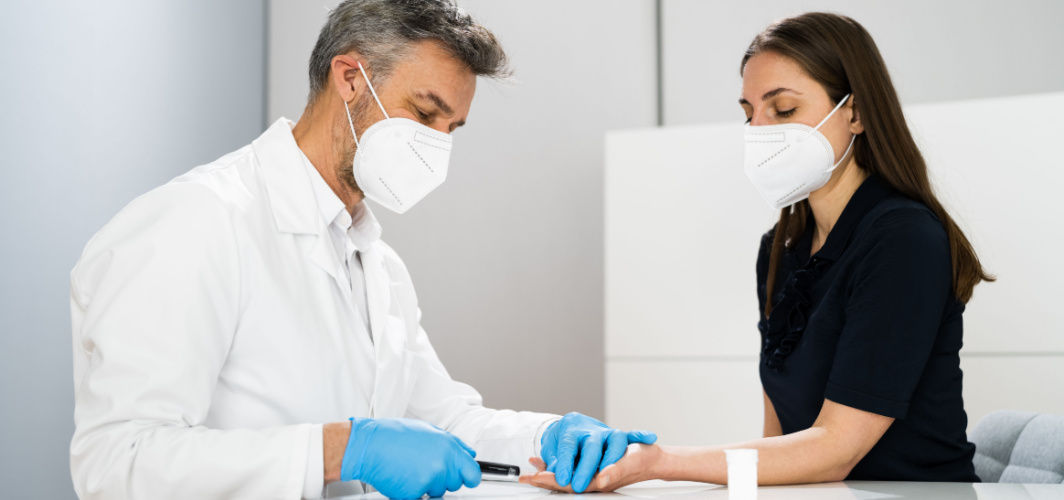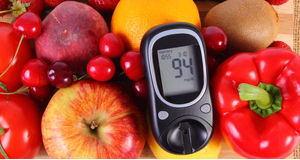Diabetes Management
Why urinary tract infection occurs commonly in diabetics?
4 min read
By Apollo 24/7, Published on - 19 December 2020, Updated on - 11 December 2023
Share this article
0
0 like

What is urinary tract infection (UTI)?
If the infection is in the urinary bladder, it is called cystitis.
If the infection is in the urethra (the tube-like part that allows urine to pass out of the body), it is called urethritis.
If the infection reaches the kidneys, it is called pyelonephritis.
Why are diabetics prone to urinary tract infections?
A higher concentration of glucose in the urine allows the disease-causing bacteria to grow.
High glucose levels in the renal parenchyma (a part of the kidney) provide a favourable environment for the multiplication of microorganisms, which ultimately results in the kidney getting infected.
Impairment of different types of immunity (humoral, cellular and innate immunity) in diabetics allows the disease-causing bacteria to cause infection.
Nerve damage (neuropathy) in the urinary tract of diabetics can result in urinary retention and inability to urinate properly, thus resulting in reduced bacterial clearance and increased chances of infection. Studies reveal 26% to 85% of diabetic women develop bladder dysfunction due to diabetic neuropathy.
What are the signs of urinary tract infection in diabetics?
Constant feeling of the need to urinate
Pain or burning sensation while urinating
Foul-smelling urine
Cloudy urine
Pain in the abdomen and the back
Blood in the urine
Diarrhoea
High fever
Chills
Vomiting
Pain in the back and side (flank)
How can urinary tract infections be prevented?
Maintain normal blood sugar level as too much glucose (sugar) in the urine would encourage bacterial growth in the urinary tract.
Try and keep the genital area clean and dry. Do not use a scented soap or intimate wash products as they can irritate the genital region.
Carefully clean and wipe the genital area from front to back after urinating or passing stool.
Drink plenty of water so that any bacteria in the tract gets flushed on passing the urine.
Wash the genitals with water (especially women), before and after sexual intercourse.
Urinate after sexual intercourse.
Do not hold the urine.
Do not rush to empty the bladder while urinating.
Wear cotton-based undergarments and avoid synthetic underwear.
Change adult diapers or pads immediately if they are soiled.
Avoid or limit alcoholic beverages as they can irritate and inflame the urinary bladder.
What can be done to treat urinary tract infections in diabetics?
Takeaway
You can also try the Apollo 24|7 Diabetes Self-Management Tool to log your sugar values, track patterns, know all about food nutrition and more.
Diabetes Management
Consult Top Diabetologists
View All
Dr Baset Hakim
Leave Comment
Recommended for you

Diabetes Management
Can High Blood Sugar During COVID-19 Indicate Diabetes?
According to a recent study, several new cases of diabetes are arising due to COVID-19. However, this form of diabetes is caused by the acute stress of a viral infection and is likely going to be temporary. The blood sugar levels might return to normal after discharge.
.jpg?tr=q-80)
Diabetes Management
Ideal Diet Plan for Gestational Diabetes
Planning an ideal diet for gestational diabetes involves balance, portion control, and avoiding certain foods. Fill your plate with non-starchy vegetables, lean proteins, and whole grains. Include healthy fats and hydrate well. Stay away from refined carbohydrates, sugary treats, fried foods and alcohol for effective blood sugar management. Remember, professional guidance like the Apollo Super 6 program can offer personalized support for managing diabetes.

Diabetes Management
Make These Simple Lifestyle Changes To Lower Your Risk of Diabetes
Reduce diabetes risk: limit refined carbs, choose high-fiber foods, and include lean proteins. Exercise aids weight loss and insulin sensitivity. Shed excess weight, quit smoking, control portions. Embrace a high-fiber diet, ensure enough vitamin D, cut processed foods and sugary drinks. Moderate healthy fats. These steps optimize blood sugar and lower diabetes risk.
Subscribe
Sign up for our free Health Library Daily Newsletter
Get doctor-approved health tips, news, and more.
Visual Stories

8 Fruits That are Incredibly Healthy for Diabetes
Tap to continue exploring
Recommended for you

Diabetes Management
Can High Blood Sugar During COVID-19 Indicate Diabetes?
According to a recent study, several new cases of diabetes are arising due to COVID-19. However, this form of diabetes is caused by the acute stress of a viral infection and is likely going to be temporary. The blood sugar levels might return to normal after discharge.
.jpg?tr=q-80)
Diabetes Management
Ideal Diet Plan for Gestational Diabetes
Planning an ideal diet for gestational diabetes involves balance, portion control, and avoiding certain foods. Fill your plate with non-starchy vegetables, lean proteins, and whole grains. Include healthy fats and hydrate well. Stay away from refined carbohydrates, sugary treats, fried foods and alcohol for effective blood sugar management. Remember, professional guidance like the Apollo Super 6 program can offer personalized support for managing diabetes.

Diabetes Management
Make These Simple Lifestyle Changes To Lower Your Risk of Diabetes
Reduce diabetes risk: limit refined carbs, choose high-fiber foods, and include lean proteins. Exercise aids weight loss and insulin sensitivity. Shed excess weight, quit smoking, control portions. Embrace a high-fiber diet, ensure enough vitamin D, cut processed foods and sugary drinks. Moderate healthy fats. These steps optimize blood sugar and lower diabetes risk.

